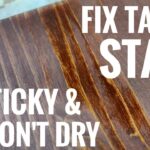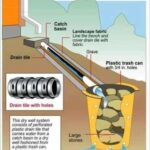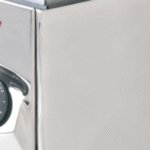Are you tired of dealing with a soggy backyard every time it rains? You’re not alone.
Many homeowners face the challenge of managing excess water on their property. This is where the debate of dry well vs French drain comes into play. Choosing the right solution can save you from the stress of waterlogged lawns, potential foundation issues, and unwanted mosquito breeding grounds.
But which option is best for your home? Understanding the differences and benefits of each can guide you to make an informed decision. Dive into this article as we explore these two popular drainage solutions, helping you keep your yard dry and your home safe.
Dry Well Basics
Dry wells are often misunderstood yet incredibly useful solutions for managing excess water in your yard. Imagine a simple, underground pit that collects water and allows it to slowly seep into the surrounding soil. A dry well isn’t just a hole; it’s a strategic way to prevent water from pooling and causing damage. If you’ve ever stepped into a soggy backyard after a heavy rain, you know what a nuisance standing water can be. Dry wells might just be your saving grace.
Function And Purpose
The primary function of a dry well is to manage stormwater runoff efficiently. It collects excess water from roofs, driveways, or other surfaces and gradually releases it underground. This prevents flooding and erosion, which can wreak havoc on your landscape.
Dry wells are perfect for homes in areas with heavy rainfall. By redirecting water underground, you can protect your foundation and keep your garden thriving. Consider your yard’s drainage needs—wouldn’t it be great to keep water where it belongs?
Installation Process
Installing a dry well is simpler than you might think. You start by digging a large hole, typically 3-4 feet deep, depending on your yard’s size and soil type. The hole is then lined with a permeable fabric to prevent soil erosion.
Next, fill the hole with gravel or stone, which allows water to filter through easily. Finally, cover it with soil and sod, blending it seamlessly into your yard. You might be surprised at how unobtrusive a dry well can be.
Pros And Cons
Pros:
- Prevents water pooling and basement flooding.
- Easy to install with minimal disruption to your yard.
- Environmentally friendly solution for water management.
Cons:
- May require regular maintenance to ensure proper function.
- Not suitable for areas with poor drainage or heavy clay soils.
- Initial installation costs can be high compared to simpler alternatives.
Have you ever considered a dry well for your water woes? It’s worth weighing the benefits against the drawbacks. Dry wells can be a game-changer, but they aren’t for everyone. Would they suit your needs?
French Drain Essentials
French drains are a common solution for managing water drainage issues. This system effectively redirects water away from problem areas, protecting your property. Understanding the essentials of a French drain can help you decide if it’s right for your needs.
How It Works
A French drain uses a trench filled with gravel or rock. Inside this trench, a perforated pipe is placed. This pipe collects and redirects water. Water flows into the trench, then into the pipe. From the pipe, water moves away from your property. This prevents flooding and erosion.
Installation Steps
Begin by planning the trench location. Choose areas prone to water accumulation. Use a shovel to dig the trench. Ensure the trench has a slope. This aids water flow. Cover the bottom with gravel. Place the perforated pipe on top. Cover the pipe with more gravel. Finish by covering with soil or turf.
Advantages And Disadvantages
French drains effectively manage water. They prevent property damage. Installation is straightforward. They are adaptable to different terrains. French drains require maintenance. Gravel can clog over time. Installation can disrupt landscaping. They may not suit every property.
Comparing Dry Wells And French Drains
Choosing between a dry well and a French drain is important for managing water. Both systems aim to redirect excess water, preventing damage to your property. Understanding their differences helps you make an informed decision.
Cost Considerations
Dry wells often have a higher initial cost. They require excavation and specialized materials. French drains are usually more budget-friendly. They use gravel and simple pipes, reducing installation expenses. Long-term costs depend on soil conditions and maintenance needs.
Maintenance Needs
Dry wells need regular inspection. Debris can clog them, reducing effectiveness. French drains also require maintenance. Cleaning the pipes and ensuring clear pathways is crucial. Both systems benefit from routine checks to ensure optimal performance.
Effectiveness In Different Climates
In arid areas, dry wells work well. They efficiently manage sudden rainfall. French drains perform better in regions with consistent rain. They direct water away quickly, preventing soil erosion. Climate impacts the choice between these systems.
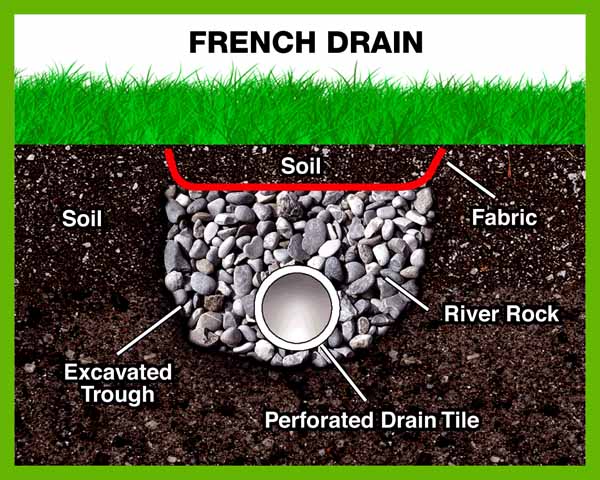
Credit: www.fahobsonlandscaping.com
Choosing The Right Solution
Selecting the ideal drainage system involves comparing dry wells and French drains. A dry well absorbs excess water, directing it underground. In contrast, French drains channel water away using a gravel-filled trench. Each option suits different soil types and water issues, offering unique benefits for managing rainwater effectively.
Choosing the right solution for managing water drainage in your yard can be a daunting task. With options like dry wells and French drains, making the right choice depends on several factors. Understanding your yard’s needs, the environmental impact of each solution, and their long-term benefits can guide you towards the best decision.Assessing Your Yard’s Needs
Before deciding between a dry well or a French drain, take a close look at your yard. Does it have a specific area that always floods after heavy rain? Is the soil in your garden clay-heavy and slow to drain? Identifying these characteristics will help you determine which system suits your property best. Consider the slope and layout of your yard. A French drain might be ideal if you have a slope that directs water towards your home. On the other hand, if water pools in a flat area, a dry well could be more effective.Environmental Impact
Many homeowners are now prioritizing eco-friendly solutions. How does each option affect the environment? French drains can help with soil erosion by directing water away, but they require regular maintenance to prevent clogs. Dry wells, by contrast, allow water to seep back into the ground, replenishing the water table. If you’re mindful of conserving groundwater, a dry well might align more closely with your values.Long-term Benefits
Think about the future when choosing between these solutions. Which one will save you money in the long run? A French drain, while initially more expensive, could reduce the need for constant repairs if flooding is a recurring problem. Dry wells are usually less costly upfront and can handle large volumes of water, offering peace of mind during heavy rainfall. However, they may need more frequent inspections to ensure they don’t fill up with sediment over time. When it comes to making a decision, there are no one-size-fits-all answers. What works for your neighbor might not be right for you. Have you considered the possibility of combining both solutions for optimal results? This hybrid approach can address both surface and subsurface water issues effectively. By carefully evaluating your yard’s characteristics and considering both immediate and long-term implications, you can make an informed choice that fits your needs and lifestyle.Diy Vs Professional Installation
Choosing between DIY and professional installation for dry wells or French drains can impact effectiveness. Dry wells manage excess water by infiltration into the soil, while French drains redirect water away from structures. DIY projects offer cost savings but may lack expertise, whereas professional installations ensure reliability and optimal function.
Deciding between a dry well and a French drain can feel like a puzzle. Adding to this, the choice between DIY and professional installation makes the decision even tougher. Both options have unique demands and benefits. Whether you’re a hands-on homeowner or someone who prefers leaving tasks to experts, understanding your abilities and resources is essential. Let’s explore the key elements of skills, cost, and when to call a professional to help you make the best choice.Skills And Tools Required
Taking on a DIY project requires a specific set of skills and tools. For a dry well, you need basic landscaping skills, a shovel, gravel, and a large container or well liner. A French drain demands slightly more expertise with trench-digging and installing perforated pipes. This also involves using a level to ensure proper water flow. While you might have some tools at home, renting a trench digger or buying specialized drainage equipment can be necessary. Are you prepared to handle these tools confidently?Cost Comparison
DIY projects are often appealing due to the potential savings. With DIY, you mainly spend on materials and any necessary tool rentals. Professional installation, however, includes labor costs, which can be significant. Yet, professionals often have access to higher-quality materials at better prices. Consider a scenario where a DIY dry well costs $300, while a professional might charge $800. Is the peace of mind worth the extra cost?When To Call A Professional
Sometimes, the complexity of the project makes professional help the best option. If your property has extensive drainage issues or a steep slope, expert analysis is crucial. Professionals bring experience and can often spot problems you might miss. They also ensure compliance with local regulations, preventing future headaches. If you’re unsure about the installation or face unforeseen challenges, reaching out to a professional can save you time and money. Have you ever regretted not asking for help sooner? Choosing between DIY and professional installation for dry wells or French drains isn’t just about cost or convenience. It’s about evaluating your skills, tools, and the project’s demands. What will bring you the most satisfaction and effectiveness?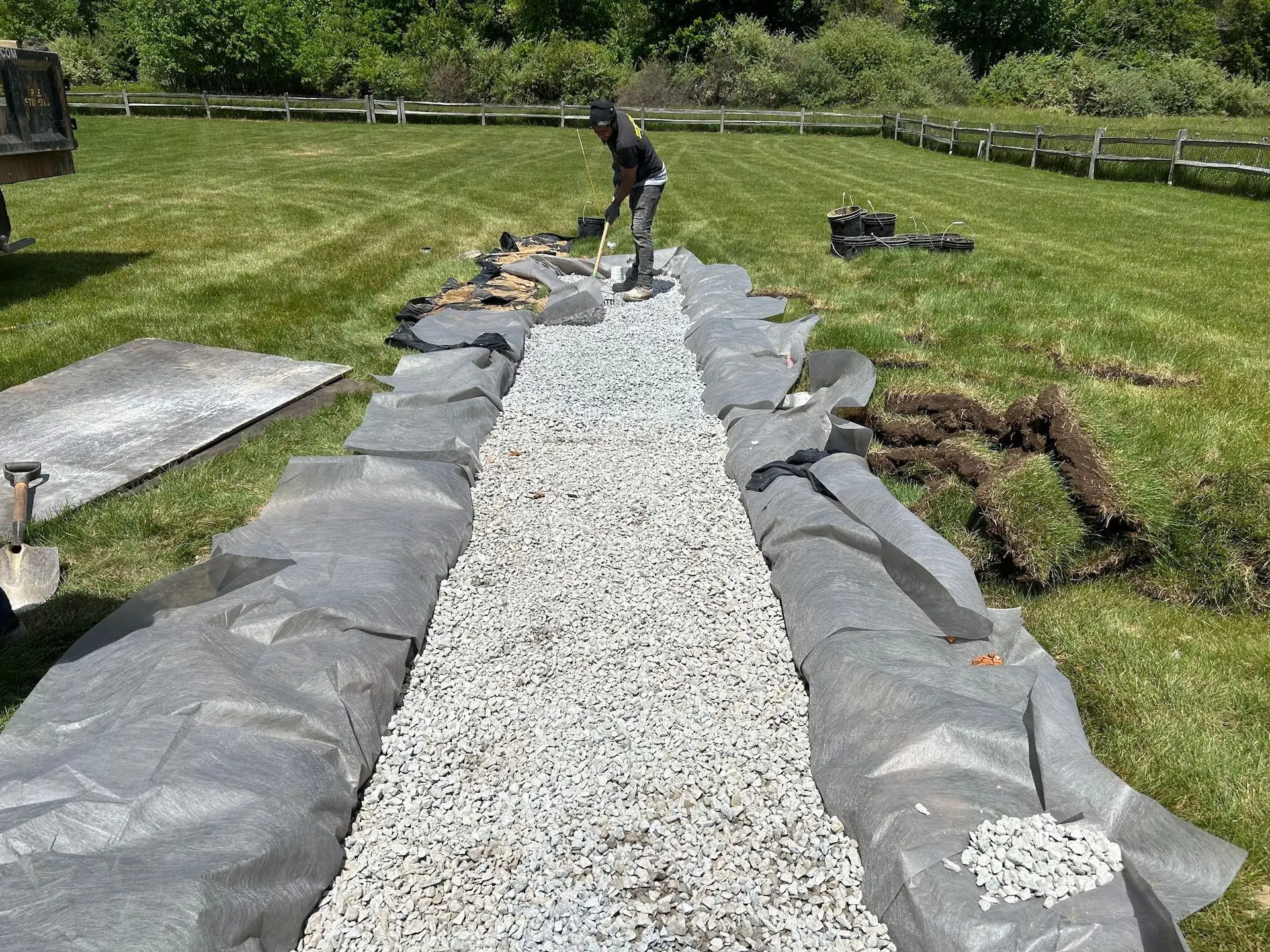
Credit: drycretewp.com
Common Mistakes To Avoid
Choosing between a dry well and a French drain can be tricky. A common mistake is underestimating soil types, which affects drainage efficiency. Consider the landscape’s slope and water flow to avoid future water issues. Proper installation is crucial for effective water management.
When setting up a drainage system, choosing between a dry well and a French drain can be challenging. Both options have their merits, but the success of either largely depends on proper installation. To ensure efficiency, it’s crucial to avoid common pitfalls. Understanding these mistakes can save you time, money, and effort, ultimately providing the best drainage solution for your needs.Incorrect Sizing
Choosing the right size for your drainage system is vital. An undersized dry well or French drain can lead to overflow and ineffective drainage. For example, a friend of mine installed a dry well without calculating the volume of water it needed to handle during heavy rains. The result was a flooded backyard. To avoid this, assess the water volume and opt for a system that can handle peak conditions. Don’t guess—make informed decisions based on your area’s rainfall data.Poor Placement
Where you place your dry well or French drain can make or break your drainage strategy. Placing them too close to your home can cause water to seep into the foundation. I once saw a neighbor’s French drain installed right next to their driveway, only to have it push water towards their garage during storms. Always consider the slope and natural water flow on your property. The goal is to direct water away, not towards important structures.Ignoring Soil Conditions
Soil type plays a critical role in the effectiveness of your drainage system. Sandy soil drains well, while clay can hold water, leading to saturation and potential failure. A client of mine ignored the clay-heavy nature of their soil and installed a dry well, only to face constant overflow. Test your soil before installation. If necessary, amend it or choose a different drainage solution. Remember, understanding your soil can guide you to a more effective and long-lasting system. Are you considering a drainage upgrade? Avoid these mistakes and set your system up for success. What challenges have you faced with drainage solutions? Let us know in the comments!Maintenance Tips
Choosing between a dry well and a French drain depends on your drainage needs. A dry well collects water underground, while a French drain redirects surface water. Regularly inspect and clear debris to ensure effective water flow and prevent flooding.
Maintaining a dry well or a French drain is crucial for ensuring they function efficiently in managing water runoff on your property. These systems help prevent water damage to your home and landscape, but they require regular care to keep them in top shape. Follow these maintenance tips to extend the life of your drainage system and ensure it operates effectively.Regular Inspections
Regular inspections are essential for identifying potential issues before they become serious problems. Check your dry well and French drain at least twice a year. Look for any signs of clogging or water pooling around the system, which might indicate a blockage. Personally, I’ve found that inspecting after a heavy rain can be revealing. This is when issues are most likely to surface. Use these inspections to note any unusual changes or damage.Cleaning And Repairs
Routine cleaning is key to keeping your drainage systems clear and functional. For French drains, clear away debris like leaves and soil that might have accumulated around the grates. This helps maintain optimal water flow. Dry wells, on the other hand, may need sediment removal every few years. If you notice decreased efficiency, it might be time for a professional cleaning. Small repairs, such as fixing a broken grate or patching leaks, should be handled promptly to prevent larger issues.Seasonal Considerations
Each season brings its own set of challenges for drainage systems. In autumn, falling leaves can quickly block your French drain. Make it a habit to clear these regularly to maintain flow. Winter can be particularly tough on dry wells. Freezing temperatures may cause water to expand, potentially cracking the well. Ensure your systems are free of standing water before winter sets in to avoid damage. Taking these proactive steps can make a significant difference in the longevity and effectiveness of your dry well or French drain. What maintenance practices have you found most effective for your drainage system? Share your experiences in the comments below!
Credit: www.pinterest.com
Innovative Alternatives
Managing water runoff effectively is crucial for homes and landscapes. While dry wells and French drains are popular, other innovative options exist. These alternatives not only manage water but also enhance aesthetic appeal. They are sustainable, efficient, and often more visually pleasing.
Permeable Pavers
Permeable pavers allow water to seep through surfaces. They reduce runoff by allowing rainwater to soak into the ground. These pavers come in various styles and sizes. They blend seamlessly with any landscape design. They are eco-friendly and help recharge groundwater supplies.
Rain Gardens
Rain gardens are planted areas designed to collect rainwater. They use native plants to absorb and filter runoff. This reduces water pollution and erosion. Rain gardens also attract beneficial insects and birds. They add beauty and biodiversity to any yard.
Green Roofs
Green roofs are covered with plants and vegetation. They absorb rainwater and reduce runoff. Green roofs provide insulation, lowering energy costs. They improve air quality and create habitats for wildlife. This option transforms urban areas into green spaces.
Frequently Asked Questions
What Is A Dry Well Used For?
A dry well collects and disperses excess water into the ground. It prevents water pooling.
How Does A French Drain Work?
A French drain redirects water away from areas. It uses a trench filled with gravel and a pipe.
Which Is Better For Basement Flooding?
French drains are better for basement flooding. They actively redirect water away from structures.
Can Dry Wells And French Drains Be Used Together?
Yes, they can. Combining them improves water management. It enhances drainage efficiency.
What Maintenance Do Dry Wells Need?
Dry wells need regular inspection. Check for clogs and sediment build-up. Ensure proper water flow.
Conclusion
Choosing between a dry well and a French drain depends on your needs. Dry wells are great for small areas. They handle moderate rainfall well. French drains work well for larger spaces. They manage heavy water flow efficiently. Consider your budget and space requirements.
Both systems help prevent water damage. Consult with a professional for the best choice. Proper installation is crucial for effectiveness. Regular maintenance ensures long-term performance. Invest wisely in your home’s drainage solution. Protect your property from water issues. Your home deserves the best care.
Make an informed decision for peace of mind.


